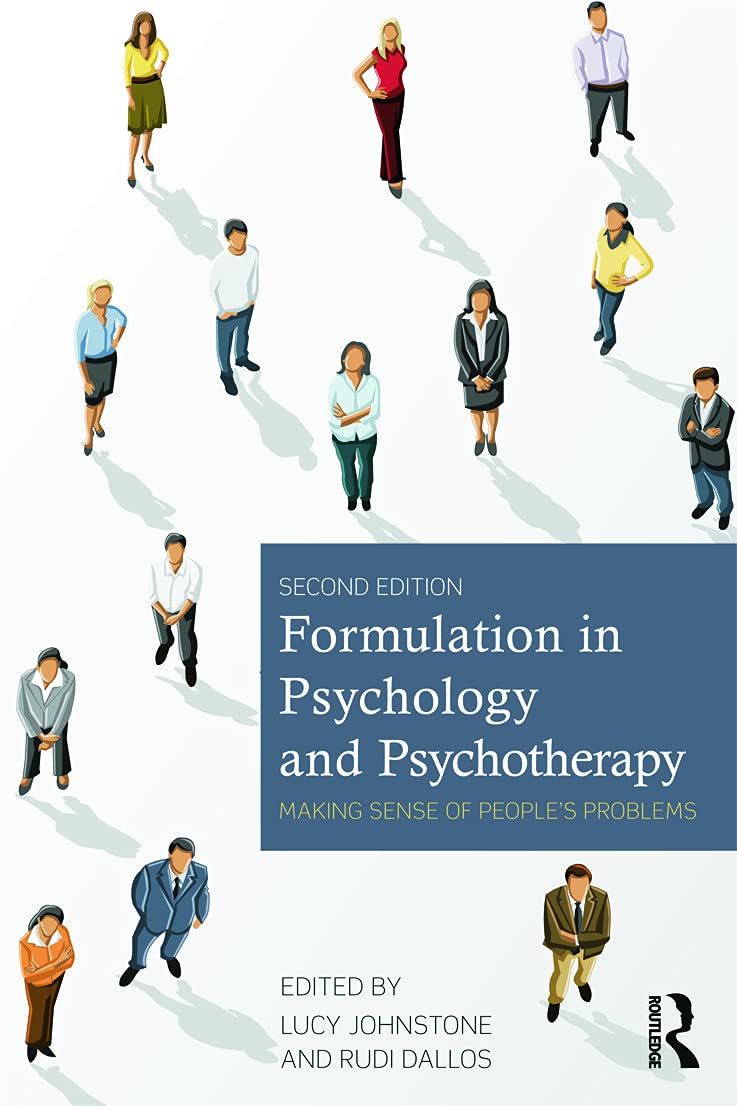About this deal
The first edition of Formulation in Psychology and Psychotherapy caught the wave of growing interest in formulation in a clinical context. Formulation is attracting an increasing amount of interest in the fields of psychology, psychiatry, psychotherapy and counselling. To save this article to your Google Drive account, please select one or more formats and confirm that you agree to abide by our usage policies. Seeing how therapists from each approach would work with the two clients helped clarify the similarities and differences between models.
In covering a variety of perspectives – not only cognitive–behavioural, psychodynamic, systemic and integrative, but also social inequalities and social constructivist viewpoints – each psychologist contributor has been asked to produce specimen formulations for two case vignettes: a young man expressing paranoid fears and an anxious 9-year-old girl with developmental problems (although some pass on the latter).Case formulations are best completed collaboratively, with clients positioned as the 'experts in themselves'. Please also list any non-financial associations or interests (personal, professional, political, institutional, religious or other) that a reasonable reader would want to know about in relation to the submitted work. However, the book's occasional infelicities are offset by consideration of areas of a patient's positive strength and resilience within formulation, as well as a healthy wariness concerning the dangers of allowing formulation to unduly restrict the ability to see what is in front of us. The book is unique in including newer therapeutic approaches such as narrative therapy and social inequalities; it critiques and takes forward recent work on integration, and provides a lively and challenging critical evaluation of the area as a whole.
It looks at the growing trend for formulations that draw on two or more therapeutic models and includes two chapters dealing with integrative formulation. It demonstrates the richness of ideas which psychologists and therapists contribute to their understanding of clients' problems as well as confronting the complex issues arising from the idea of formulation itself. Please list any fees and grants from, employment by, consultancy for, shared ownership in or any close relationship with, at any time over the preceding 36 months, any organisation whose interests may be affected by the publication of the response.
Using the vehicle of the case formulation, this book often succeeds in describing and demonstrating key differences in how clinicians using different models think. It is fascinating to view the case studies through the lenses of each therapeutic approach, and the divergent ways of working that follow. Formulation is widely considered a critical component of psychological therapies, and is thought to have a number of benefits both for the therapeutic process and the client directly. Exploring the impact of cognitive behavioural therapy formulation in first episode psychosis: A reflexive thematic analysis.
The omission can arouse suspicion as to how fully the impact of pain, dependence and loss, as well as stigma, is appreciated. It introduces the reader to the theory and practice of formulation through the discussion of two clients (one adult and one child focused problem), whose problems are formulated from the perspective of 5 different therapeutic traditions: systemic, psychodynamic, community, cognitive- behavioural and social constructionist/narrative. A case formulation (case conceptualisation) can be thought of as any way of helping a client to understand what their difficulties are, where they originated, and what keeps them going. Drawing on psychological theory, it attempts to examine a client or family's problems in terms of how they arose and what may currently be holding these in place. Often, little attention is paid to how a formulation would be used to facilitate treatment within a particular model, in favour of its purely descriptive functions.Some chapters, such as those on cognitive–behavioural therapy and systemic family work, are exemplary introductions to formulation within these models.
Therapeutic alliance in cognitive therapy for schizophrenia and other long-term mentally ill patients: development and relationship to outcome in an in-patient treatment programme. This Friendly Formulation diagram presents all of the these 5 p's in an accessible way, framed by the question "How did the problem develop? Johnstone and Dallos' text, now in its second edition, has become a cornerstone of British clinical psychologist's thinking and training. The editors’ credulous stance in relation to the diatribes of Jeffrey Masson may also undermine some readers’ confidence.Although the former are this book's natural audience, I think it has much to offer inquiring psychiatric trainees. Similar to the first edition, Johnstone and Dallos have created an edited text that brings together numerous contributors from the mental health professions to give us different theoretical perspectives on the process of clinical formulation.
Related:
 Great Deal
Great Deal 